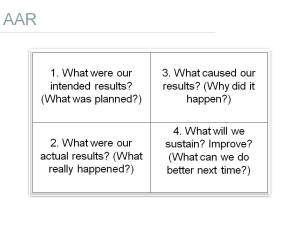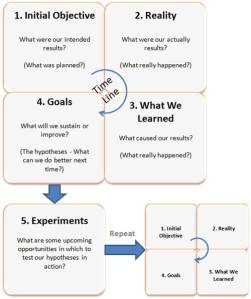Imagine you had enough money to hire a one-on-one companion, a coach, for every employee. What would happen?
First, every employee would be noticeably more productive. Second, every employee would stretch to become better. You would have someone saying, all the time, to each and every employee, “you did this well, and this is what to work on next.” And, yes, there would need to be coaches to watch the coaches work – maybe on video – so that they could help the coaches get better. You know, “this is how you coached well, and this is what you need to work on to coach more effectively.”
Well, rather obviously, we do not have the resources to make this happen. So, we have large classrooms with only one teacher, large groups of employees with only one supervisor… the list goes on.
But, here’s the thing. If left to themselves, many employees simply repeat past mistakes, and do not improve, and get better… They are not reminded. They are not challenged. No one “gets in their face.”
This is a problem.
So, recently, I presented my synopsis of Paul Tough’s terrific book How Children Succeed to a leadership team of a thriving organization – a team that takes learning seriously. (“Seriously” is the only way we should ever take learning). In it is the story of a remarkable middle school chess coach, Elizabeth Spiegel. The book describes how she helps each player develop a “game plan,“ for each game, and then she debriefs each tournament game in meticulous fashion. Her players are required to keep a log of each move made in the game — both moves they made, and moves made by their opponents. They also are required to note how long between each move – how much time they took to decide what move to make. And then, she “replays” the games with them. She invests a lot of one-on-one, face-to-face time.
She is tough, demanding, and “gets in their face.” Paul Tough’s description: “she does not hug.”
I stated, in summary form, that we need to learn, for every important task or endeavor, to pre-brief and then debrief.
So, after my synopsis, one of the participants in my session who served in the military said (paraphrasing): “That is why the military conducts After Action Reviews – AARs — after each action.” The purpose is clear: to actually learn, with meticulous attention-to-detail, what was done well, and what needs to be done differently, better, the next time. It is pretty easy to see why it is crucial that the military conducts such reviews. Lives may be at stake.
It was a great comment. Not only did I agree, but I came home and started reading up on the AAR process. Imagine if it were done for every employee, at the end of every “action” (say, after each customer interaction, after each report is finished, after each meeting is conducted…). In what I read, there is a clear four step-process followed in every AAR. Here’s the process (from the Wikipedia article):
To apply this tool ask yourself and the team
– What was planned?
– What actually occurred? (facts not judgments)
– What went well and why?
– What can be improved and how?
Now, you already know the bad news. No company or organization can actually afford to do this, for every individual, or even every small group of workers, every half day at work or so, can they? (Although, I suspect even a short “huddle” conducted twice a day in small groups, focusing on these four questions, could have amazing results).
So, the challenge for nearly all of us is to build a work habit of conducting, with incredible regularity, our own After Action Reviews. To regularly and ruthlessly ask these four questions:
• What did I plan to do? — (so – you’ve got to learn to plan well)
• What did I actually do? – (so, you’ve got to learn to execute well).
• What went well, and why? — (so, was this a good plan? — and then, assuming I carried out my plan…).
• What can be improved, and how? – (so, what do I need to correct, tweak, change, add?)
So, if you supervise others, this is a practice to follow. And, if you only supervise yourself, this is still a practice to follow.
I think we might be a whole lot more productive, and grow and develop a great deal more in our own capabilities, if we did this on a regular basis. Every one of us. All of us. Don’t you think?
——————–
Here are a couple of images to help you think about AARs


And click here for a useful/helpful slide show I found on-line on How to Conduct an After Action Review.

I love the book, the AAR concept and that you thought to send it to me.
We conducted AARs called “hot washes” in parts of the Navy, and we did it monthly after every BIT(business improvement team) meeting of Ten Navy Admirals over the past two years. The diagrams are great; I will try to save them. AND I did pick up and/or Remember a few fine points on HOW!. Thank you so much. Great thoughts for a rainy Saturday morning!
Tom Meyer